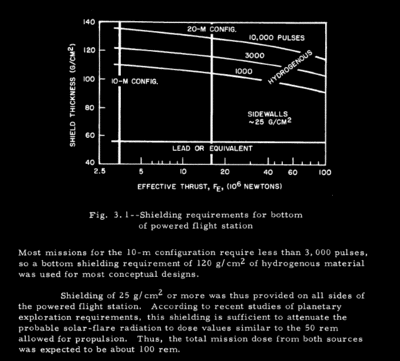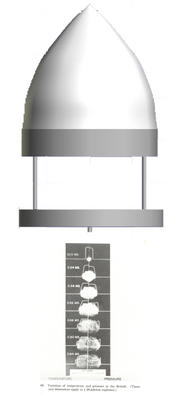Problems with Problems With The Orion Spacecraft #9: Stress
The ship's structure itself ... has to be able to take the stress of sitting next to a bunch of exploding nuclear bombs. Even with shock absorbers, it would be under repeated stress of a type not experienced by any vehicle we have ever built. The ability of a battleship to survive the strain of firing its own guns was the subject of a considerable amount of development efforts in the early 20th century, and that strain would be dramatically less than the strain experienced by an Orion. -POS
----
Fact:
"Both the pulse frequency and the acceleration profile are reasonably well simulated by a child's backyard swing operating through an arc 65deg each way from vertical". GA-5009 Volume 1 Page 14
Quoted in Project Orion Page 179
-------------
Index of problems with POS




